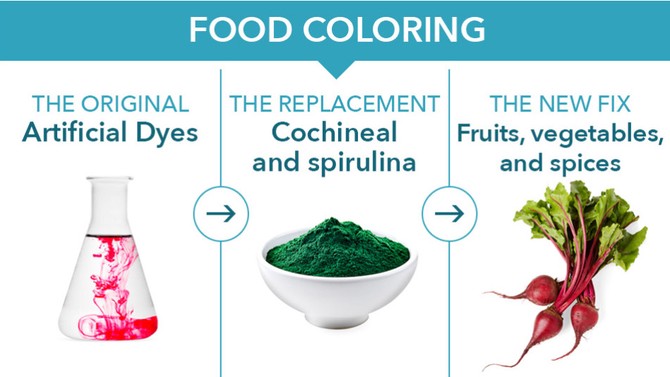3 Better-for-You Food Swaps to Try
Here are a few makeunders for common "healthy food swaps" worth sampling—including a surprising sweetener and a fruity meat alternative.
By Juno DeMelo
Food Coloring
The Original: Artificial Dyes
They’re used to prettify foods from pastries to pickles, but since a 2007 study suggested that synthetic color additives might increase hyperactivity in kids, consumers have been wary (even though the FDA disputes the link).
The Replacement: Cochineal and Spirulina
Manufacturers have experimented with colorings free of artificial chemicals with mixed results. Cochineal, a red dye made from crushed bugs that’s been used to give a rosy hue to yogurt and drinks, isn’t vegetarian and can cause allergies. The blue-green bacterium spirulina is FDA-approved to dye foods, but it alters their taste.
The New Fix: Fruits, Vegetables and Spices
Some food tech companies are using blends of carrots, red cabbage, beets, and grapes to color products like cereal and candy. In 2016, Kraft began mixing the spices annatto, turmeric, and paprika to color its mac and cheese, while General Mills is using an annatto-turmeric combo, in addition to some fruit and veggie juices, in Trix cereal.
Published 02/24/2017


